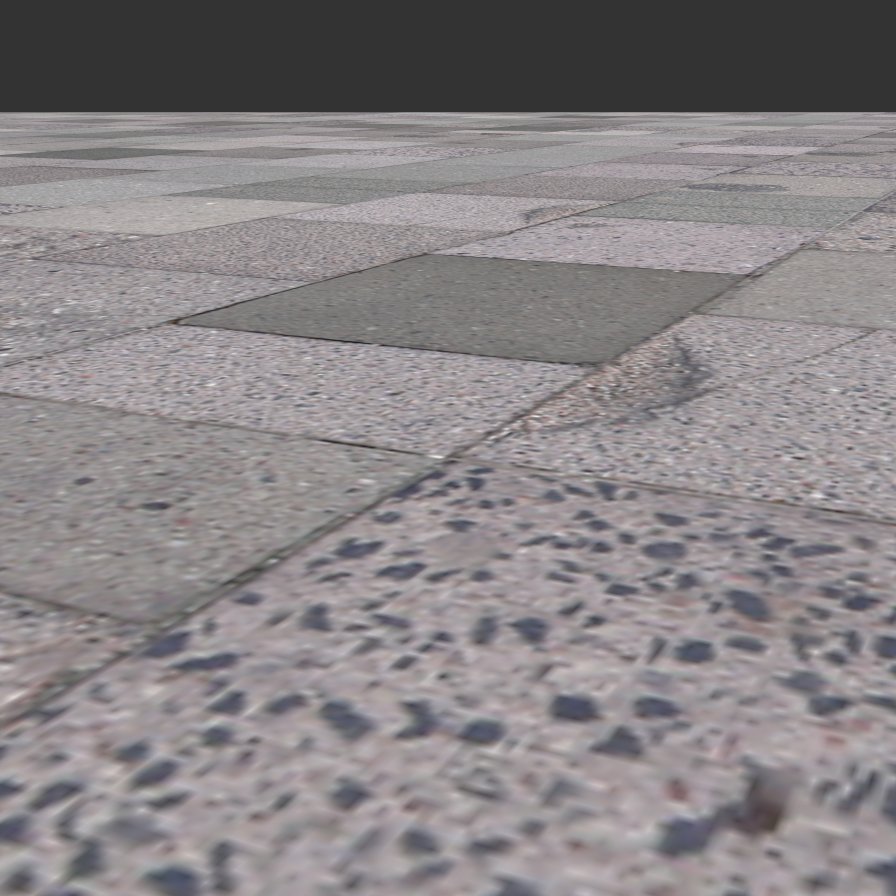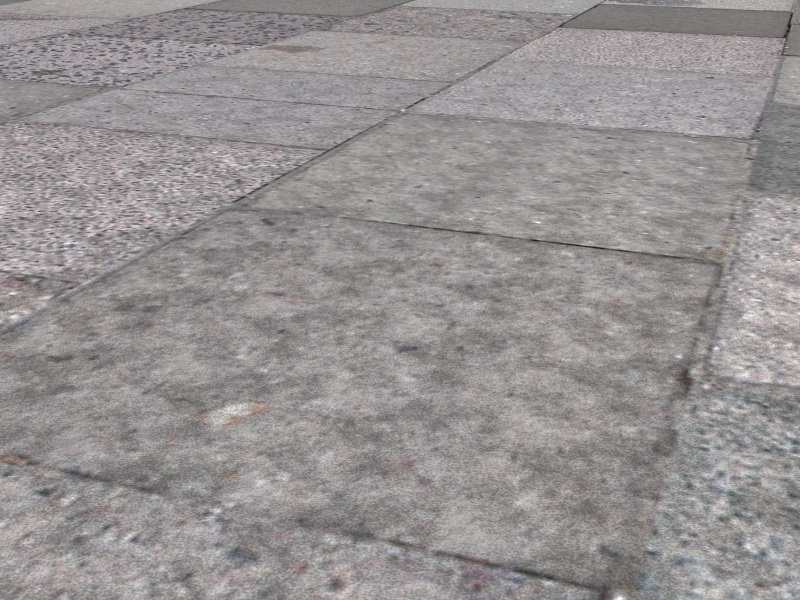Inspired by Xmas' general idea to compose a large texture out of smaller tiles, I tried to do that for a sidewalk, since it is also a sort of compression of photographed textures, which is the main topic for my diploma thesis.
This is the result:

To come to that point, I was outside and made some photographs of typical sidewalk tiles. Then I cutted some tiles out and resized them to 128x128. I also applied a sharpening filter. The first idea was, to took randomly a tile out of the pool from 18 tiles:

One can easely see that some tiles are repeated. To make that harder the second idea was, to mirror, flip or resample with X<->Y swap. These are 8 combinations of rendering the same tile! This came out to such picture:

While this is better, it is still not good enough. The next idea was, to use randomly different shades of brightness. Then one need only very few tiles to offer variety:

This leads to another problem: Tiles with noticeable attributes make it easy to see the repetition. Therefore its better to "roll" such tiles less often:

This looks good enough to assemble large textures.

That texture was used for the initial screenshot.
Another point is magnification. Since a single tile is only 128x128, one can easily see the bilinear artifacts:

I made a detailmap out of pure noise and applied it which came out to:

Since the noise is no real information, I am surprised what this "details" can to: For me its a real improvement.
This is the result:

To come to that point, I was outside and made some photographs of typical sidewalk tiles. Then I cutted some tiles out and resized them to 128x128. I also applied a sharpening filter. The first idea was, to took randomly a tile out of the pool from 18 tiles:

One can easely see that some tiles are repeated. To make that harder the second idea was, to mirror, flip or resample with X<->Y swap. These are 8 combinations of rendering the same tile! This came out to such picture:

While this is better, it is still not good enough. The next idea was, to use randomly different shades of brightness. Then one need only very few tiles to offer variety:

This leads to another problem: Tiles with noticeable attributes make it easy to see the repetition. Therefore its better to "roll" such tiles less often:

This looks good enough to assemble large textures.

That texture was used for the initial screenshot.
Another point is magnification. Since a single tile is only 128x128, one can easily see the bilinear artifacts:

I made a detailmap out of pure noise and applied it which came out to:

Since the noise is no real information, I am surprised what this "details" can to: For me its a real improvement.








